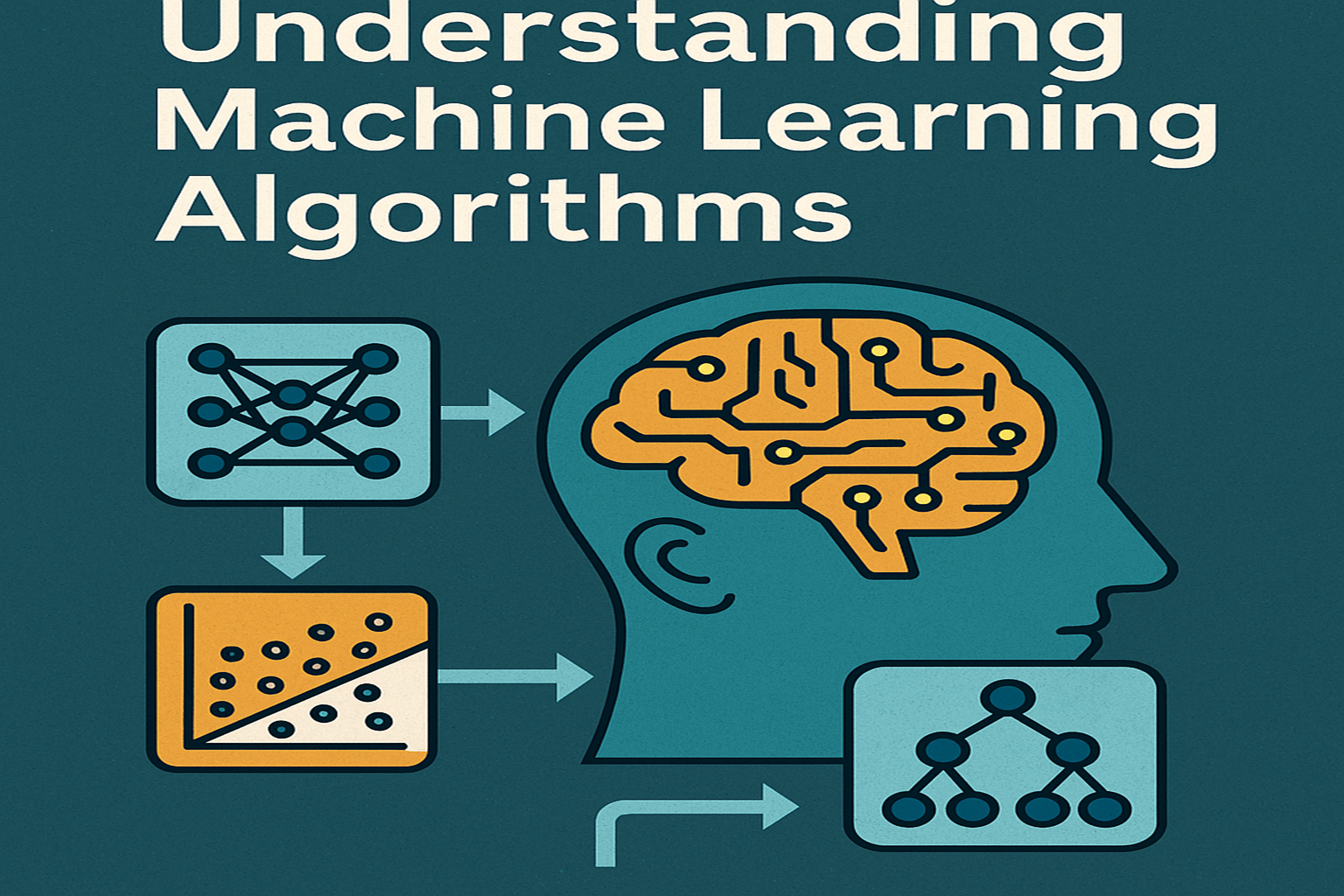Machine Learning (ML) is transforming industries—from healthcare and finance to agriculture and cybersecurity. At the core of ML lie powerful algorithms that enable machines to learn from data, identify patterns, and make decisions with minimal human intervention.
In this guide, we'll break down the most essential machine learning algorithms, explain how they work, and highlight their real-world applications.
What Are Machine Learning Algorithms?
Machine learning algorithms are mathematical models that learn from input data and make predictions or decisions without being explicitly programmed. These algorithms are categorized into three major types:
-
Supervised Learning
-
Unsupervised Learning
-
Reinforcement Learning
1. Supervised Learning Algorithms
In supervised learning, the algorithm is trained on a labeled dataset, meaning the input comes with the correct output.
Examples:
a) Linear Regression
-
Use: Predicting continuous values (e.g., house prices, sales forecasting)
-
Idea: Finds a linear relationship between input features and output.
b) Logistic Regression
-
Use: Classification problems (e.g., spam detection, customer churn)
-
Idea: Predicts probabilities using a logistic function (sigmoid).
c) Decision Trees
-
Use: Credit scoring, medical diagnoses
-
Idea: Splits data into branches to reach decisions based on feature values.
d) Random Forest
-
Use: Fraud detection, customer segmentation
-
Idea: Ensemble of decision trees for improved accuracy and robustness.
e) Support Vector Machines (SVM)
-
Use: Text categorization, image classification
-
Idea: Finds the best boundary (hyperplane) to separate different classes.
f) k-Nearest Neighbors (k-NN)
-
Use: Recommendation systems, handwriting recognition
-
Idea: Classifies a data point based on how its neighbors are classified.
g) Naïve Bayes
-
Use: Spam filtering, sentiment analysis
-
Idea: Based on Bayes’ theorem with an assumption of feature independence.
2. Unsupervised Learning Algorithms
In unsupervised learning, algorithms work on unlabeled data to discover hidden structures or groupings.
Examples:
a) K-Means Clustering
-
Use: Customer segmentation, pattern recognition
-
Idea: Groups data into
kclusters based on similarity.
b) Hierarchical Clustering
-
Use: Market segmentation, genetic data analysis
-
Idea: Builds a tree of clusters based on hierarchy.
c) Principal Component Analysis (PCA)
-
Use: Dimensionality reduction, image compression
-
Idea: Reduces high-dimensional data while preserving variance.
d) Autoencoders
-
Use: Anomaly detection, data denoising
-
Idea: Neural networks that learn to compress and reconstruct input data.
3. Reinforcement Learning Algorithms
Reinforcement learning involves an agent interacting with an environment and learning to take actions that maximize cumulative rewards.
Examples:
a) Q-Learning
-
Use: Robotics, game AI
-
Idea: Learns the best action to take in a given state using a value table.
b) Deep Q-Networks (DQN)
-
Use: Self-driving cars, advanced robotics
-
Idea: Combines deep learning with Q-learning for complex decision-making.
c) Policy Gradient Methods
-
Use: Real-time strategy games, autonomous navigation
-
Idea: Directly optimizes the policy to improve decision-making.
Real-World Applications
| Industry | ML Algorithms Used | Use Case |
|---|---|---|
| Healthcare | Logistic Regression, Decision Trees | Disease prediction, diagnostics |
| Finance | Random Forest, SVM, Neural Networks | Fraud detection, risk assessment |
| Retail | K-Means, Association Rules, Regression | Customer segmentation, product recommendation |
| Agriculture | CNNs, SVM, K-Means | Crop disease detection, yield prediction |
| Cybersecurity | Naïve Bayes, Decision Trees, RL | Intrusion detection, threat hunting |
Choosing the Right Algorithm
When selecting a machine learning algorithm, consider the following:
-
Data size and type: Labeled or unlabeled, structured or unstructured
-
Problem type: Classification, regression, clustering, etc.
-
Accuracy vs. speed: Some algorithms are faster but less accurate.
-
Interpretability: Decision Trees are easier to explain than Neural Networks.
Conclusion
Understanding the core machine learning algorithms is crucial for building intelligent systems. Whether you’re building a chatbot, fraud detection engine, or personalized recommendation system, selecting the right algorithm lays the foundation for success.
As the field evolves, combining these algorithms with deep learning and AI tools opens new frontiers across industries.
Next Step:
👉 In future posts, we’ll explore how to implement these algorithms using Python (scikit-learn, TensorFlow, etc.) and real-world datasets.


